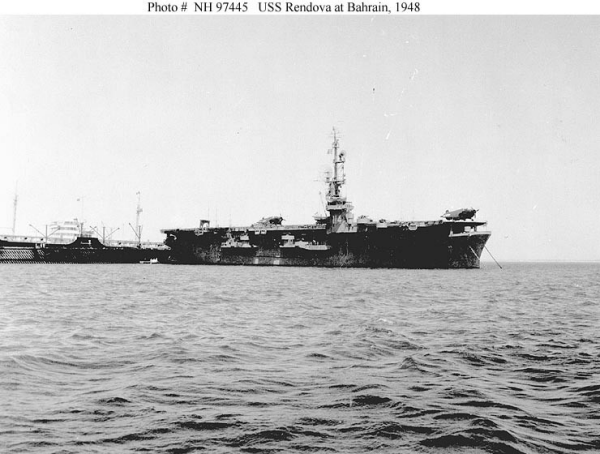Although Naval Support Activity Bahrain, as it is known today, has existed in its present form for slightly more than a decade, the continued United States Navy presence in Juffair has evolved from the small detachments organized nearly 60 years ago into the modern infrastructure today, providing award-winning support through logistical, supply and protection as well as a world-class Navy Exchange facility and top-notch Morale, Welfare, and Recreation programs to both United States Armed Forces and coalition assets.
Initially recognized as the U.S. Middle East Force in 1948, what was to become Naval Support Activity Bahrain began as a small continuous U.S. Navy presence, which later transformed into a small shore facility in Juffair, occupying Royal Navy territory while providing logistical and communications support to Marine Expeditionary vessels.
A gate to the installation circa 1971
In 1971, permanent Royal Navy presence in Bahrain officially ended, and the United States Navy moved onto the ten acres previously occupied by British operations, which eight years later became known as Administrative Support Unit Bahrain.
The facility remained known as this until 1992, when, in an effort to more accurately reflect the increasing role and mission of United States Navy activities in the region, the organization became known as Administrative Support Unit Southwest Asia.
In 1997, under the aegis of the Military Construction Program, facilities located in Juffair saw an increased buildup, resulting in what is known today as Naval Support Activity Bahrain.
While constant rehabilitation of existing buildings, construction of new facilities and an aesthetic overhaul of the facilities known as Naval Support Activity Bahrain are always ongoing, the mission of the organization has never changed – to provide top-notch service and unparalleled support to the thousands of United States Navy and Coalition Sailors and ships using the facilities here each year.

Mediterranean moored to the BAPCO pier at Bahrain, circa July 1948. Mooring description from the original report: A Mediterranean type moor to the BAPCO pier was employed when the ship refueled. The port anchor was dropped well up stream and thirty fathoms of chain veered. The starboard anchor was then dropped and one hundred and five fathoms of chain veered. At the same time the amount of chain veered to the port anchor was increased to one hundred and thirty-five fathoms. The stern was pushed around until perpendicular to the dock and then secured to the dock .... The original photograph is in a 16 July 1948 report among USS Rendova post-1946 Reports, held by the Naval History and Heritage Command's Operational Archives Branch, 1999. Official U.S. Navy Photograph, from the collections of the Naval History and Heritage Command.